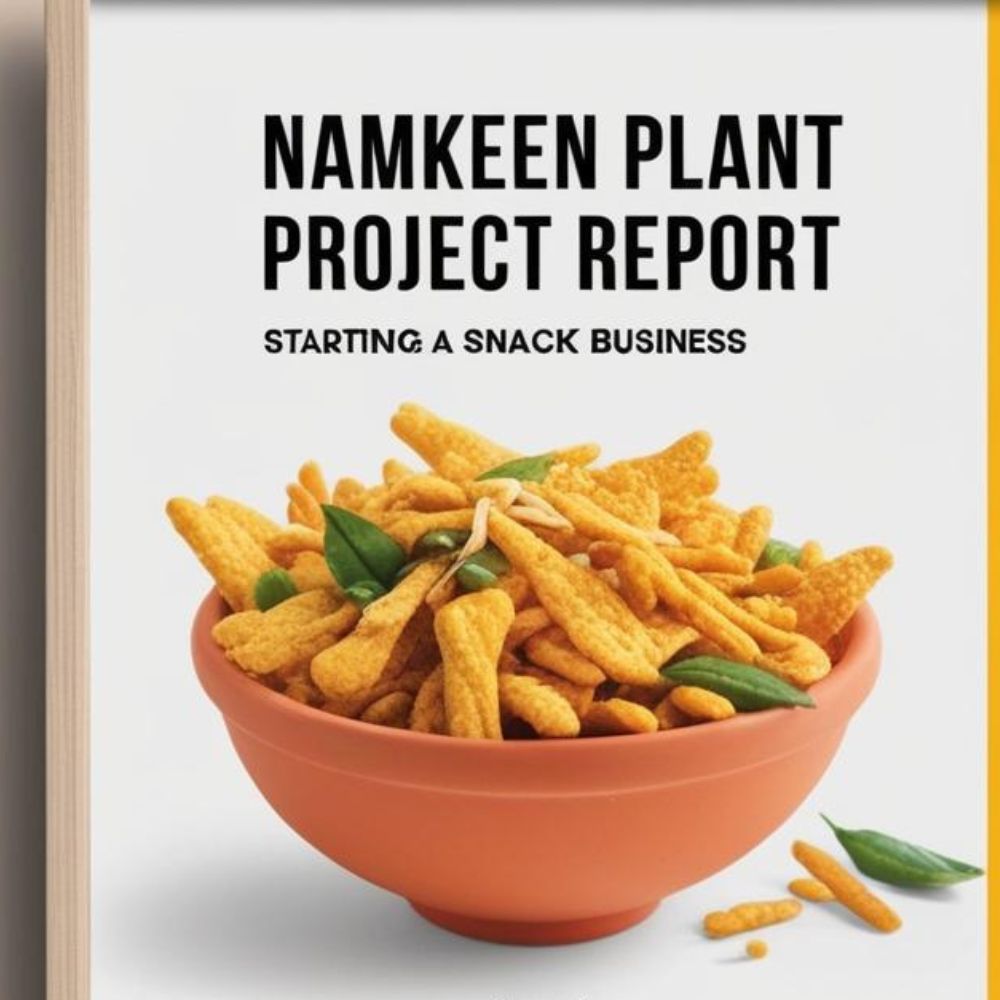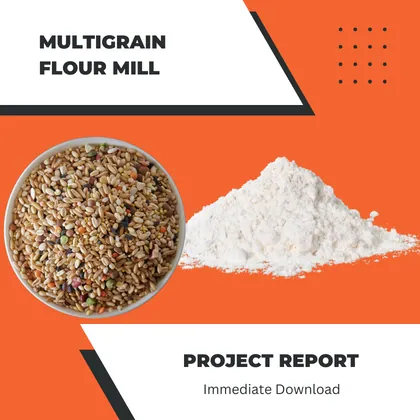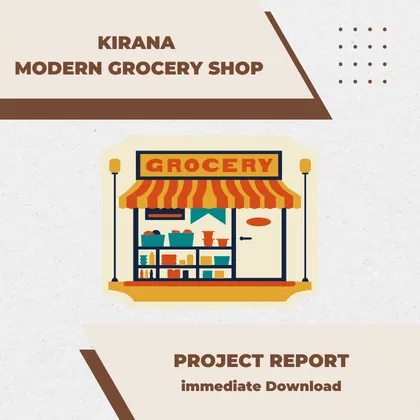Description
Planning to start a Namkeen manufacturing business? This Namkeen plant project report covers market opportunities, cost estimates, required licenses, and the manufacturing process. Perfect for planning your business plan and securing funding, this guide will help set up your successful Namkeen venture.
Key Takeaways
Table of Contents
- 1 Key Takeaways
- 2 Introduction
- 3 Market Opportunity
- 4 Types of Namkeen Products
- 5 Business Model
- 6 Namkeen Manufacturing Process Overview of Steps:
- 7 Raw Materials Required
- 8 Machinery and Equipment
- 9 Plant Setup & Location
- 10 Manpower Requirement
- 11 Investment and Cost Estimation
- 12 Licenses and Approvals Required
- 13 Profit Margin and Pricing Strategy
- 14 Marketing and Branding Tips
- 15 Break-even Analysis
- 16 Loan and Government Subsidies
- 17 Downloadable Namkeen Plant Project Report
- 18 How to Prepare a Namkeen Plant Project Report
- 19 Benefits of a professionally prepared DPR (Detailed Project Report)
- 20 Where to get help in project report writing:
- 21 Importance of a Project Report for Namkeen Manufacturing Business
- 22 Key Components of a Namkeen Plant Project Report
- 23 Major Players in the Namkeen Industry
- 24 Summary
- 25 Frequently Asked Questions
- The Namkeen market in India presents a lucrative opportunity for entrepreneurs due to low initial investments and high consumer demand for diverse snack options.
- A successful Namkeen business requires careful planning of the business model, quality raw materials, and essential machinery to ensure efficient production and compliance with safety regulations.
- Effective marketing, a well-prepared project report, and a focus on financial performance are crucial for securing funding and establishing a strong brand presence in the competitive Namkeen industry.
Introduction
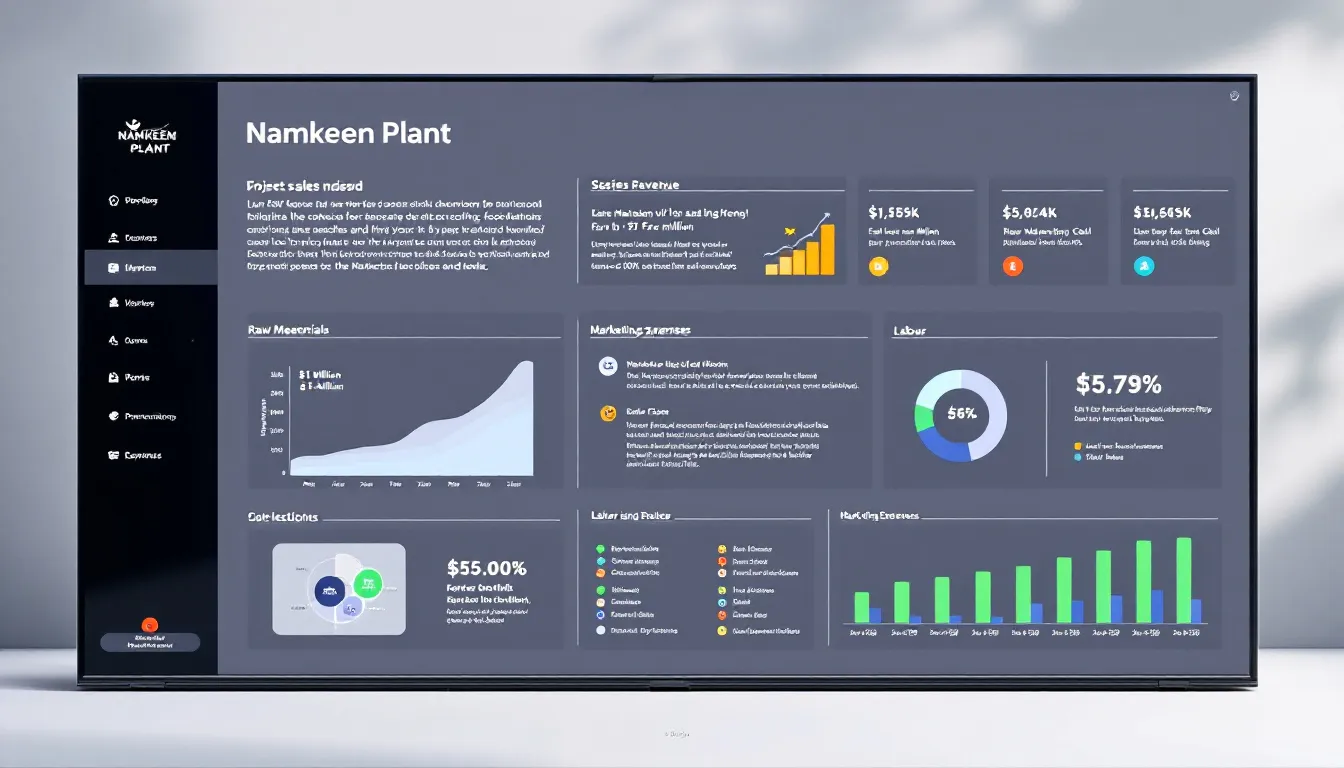
Namkeen, with its diverse range of flavors and textures, is more than just a snack; it’s a cultural staple in India. Over the past few years, the convenience of ready-to-eat snacks has made Namkeen a favorite among all age groups. Whether it’s a small-scale operation or a large-scale enterprise, the Namkeen business offers a lucrative opportunity for budding entrepreneurs. The low initial investment and high demand make it a viable option even for those with limited space and resources.
The market size for Namkeen is substantial, reflecting its widespread popularity and potential for growth.
Starting a Namkeen plant doesn’t just promise financial growth; it also allows you to be a part of a thriving market that caters to millions of customers. Imagine creating your own brand of Namkeen that not only tantalizes taste buds but also stands out in the crowded marketplace. With the right planning and execution, your Namkeen company could become a household name.
Market Opportunity
- Booming Indian Snack Food Market: The Indian snacks food market is experiencing significant growth, with an expanding market size each year. This boom is fueled by the increasing demand for Namkeen products across both urban and rural areas. A thorough market analysis is essential to understand these trends and capitalize on the opportunities.
- Huge Demand Across Demographics: The huge demand for Namkeen is driven by changing lifestyles and rising disposable incomes, making it a staple in both urban and rural households.
- Health-Conscious and Innovative Products: Consumers are increasingly seeking not only taste but also health-conscious products and innovative packaging, presenting a golden opportunity for entrepreneurs to capture a significant market share.
- Effective Marketing Strategies: Implementing effective marketing strategies, such as utilizing online platforms and targeting convenience stores, can help attract a diverse customer base and enhance brand presence with a solid marketing strategy.
- Export Potential: The scope for exports adds another layer of profitability, making the Namkeen business project a compelling venture that promises more sales and sustained growth in the global market.
Types of Namkeen Products

The Namkeen market is rich with variety, offering products like:
- Sev
- Bhujia
- Mixtures
- Chana Dal
- Aloo Bhujia
- Navratan Mix
Each of these has its unique taste and appeal, catering to different consumer preferences. The traditional snacks are always in demand, but there’s also a growing interest in low-oil, baked, and flavored variants, offering scope for innovation.
Expanding your product range to include these different flavors and types can set your Namkeen manufacturing business apart from the competition. Offering a diverse array of savory snacks caters to a broader audience and enhances your brand’s overall appeal in the Namkeen market.
Product innovation is crucial in keeping up with consumer trends and staying competitive in the Namkeen industry.
Business Model
- Scale of Operation: Decide between a small-scale setup with lower initial investment or a medium to large-scale plant that can handle higher production volumes and cater to a broader market.
- Business Plan: Outline whether your business will operate on a B2B model, supplying bulk orders to retailers and wholesalers, or a B2C model, selling directly to consumers through retail or online channels.
- Financial Planning and Impact: A well-thought-out business model, combined with effective financial planning, influences your financial performance, affecting costs, revenue, and profitability.
- Market Dynamics: Understand market dynamics to adapt your business model for attracting customers and gaining market share in the competitive Namkeen market.
- Distribution Network: Develop a robust distribution network to ensure efficient delivery of products, enhancing reach and customer satisfaction.
- Customer Attraction: Implement strategies within your business model to attract customers, ensuring sustainable sales growth for your company.
Choosing the right business model is crucial for the success of your Namkeen manufacturing business. It not only impacts your financial performance but also influences your market dynamics and distribution network, helping you attract customers and ensure sustainable sales growth.
Namkeen Manufacturing Process Overview of Steps:
- Ingredient Selection: Start with choosing high-quality raw materials, as they are crucial for producing superior Namkeen products.
- Mixing and Preparation: Blend the selected ingredients to create the desired mix, ensuring consistency and taste.
- Frying or Baking: Cook the mixture by frying or baking, depending on the type of Namkeen being produced, to achieve the perfect texture and flavor.
- Seasoning: Enhance the cooked Namkeen’s flavor with appropriate seasoning, catering to diverse consumer preferences.
- Cooling: Allow the Namkeen to cool properly to preserve freshness and quality before packaging.
- Packaging: Package the Namkeen in attractive, airtight packaging to maintain its extended shelf life and appeal to customers.
Each step in the Namkeen manufacturing process demands meticulous attention to detail and quality control to ensure the final product stands out in the competitive Namkeen manufacturing business.
Raw Materials Required
- Quality Assurance: The quality of your Namkeen is highly dependent on the raw materials used. Ensuring high standards is crucial for producing superior products.
- Common Raw Materials: Essential ingredients include gram flour (besan), pulses, rice flakes, spices, and oil. These are the building blocks of most Namkeen varieties.
- Sourcing Strategy: Obtain raw materials from reputable suppliers or local mandis. This ensures consistency in quality and helps maintain the desired taste and texture. The supply chain plays a critical role in ensuring timely and efficient sourcing of these materials.
- Impact on Business: Reliable sourcing of quality ingredients is vital for the smooth operation of your manufacturing process. It influences production costs, final pricing, and overall business strategy.
- Consistency and Taste: High-quality raw materials not only affect the taste but also the texture, ensuring your Namkeen products stand out in the competitive market.
Machinery and Equipment
- Essential Machinery: Setting up a Namkeen manufacturing plant requires specific machinery and equipment to ensure efficient production and quality control. Key pieces of equipment, which determine the production capacity, include:
- Dough Kneader
- Extruder Machine
- Fryer (Batch or Continuous)
- Seasoning Drum
- Packaging Machine
- Additional Equipment: To support the manufacturing process, the following additional equipment is necessary:
- Weighing Scales
- Oil Filters
- Storage Containers
- Impact on Quality: The choice of machinery and equipment significantly impacts the manufacturing process, influencing the quality and consistency of Namkeen products. Proper selection ensures superior product output.
- Machinery Installation: Installing machinery in an industrial area is crucial for smooth operations and compliance with industry standards. This setup is vital for maintaining efficiency and adhering to safety regulations.
- Operational Efficiency: The right machinery setup enhances operational efficiency, reducing production time and improving overall productivity, which is essential for meeting market demands and ensuring business success.
Plant Setup & Location
- Location Selection: Choose a proposed location with adequate space to accommodate your production capacity and facilitate future expansion if needed.
- Essential Utilities: Ensure the location is equipped with essential utilities such as electricity, water, and proper ventilation to support the manufacturing process.
- Compliance with FSSAI Norms: Adhere to FSSAI norms to ensure food safety and maintain high-quality standards in your Namkeen manufacturing plant.
- Layout Planning: Carefully plan the plant layout to optimize workflow, ensuring efficient use of space and resources, which enhances productivity.
- Operational Cost Minimization: A well-planned setup can minimize operational costs, contributing to the overall success and profitability of your Namkeen manufacturing business.
- Strategic Location: Consider proximity to suppliers and distribution networks to reduce transportation costs and improve supply chain efficiency.
- Industrial Area Benefits: Setting up in an industrial area can offer advantages such as better infrastructure and compliance with industry standards, which can significantly improve operational efficiency.
Manpower Requirement
Running a Namkeen manufacturing plant requires a mix of skilled and unskilled labor. Key roles include machine operators, cooks, packers, and supervisors. Each role is vital for the smooth operation of the plant, from the initial preparation of raw materials to the final packaging of the product.
Key roles in a Namkeen manufacturing plant include:
- Machine operators
- Cooks
- Packers
- Supervisors
Each role is vital for the smooth operation of the plant, from the initial preparation of raw materials to the final packaging of the product.
Having a well-trained workforce ensures that each step of the manufacturing process is executed efficiently and to the highest standard. Proper manpower planning can significantly impact your production capacity and the overall quality of your Namkeen products.
Effective workforce management is crucial for optimizing labor resources and ensuring the smooth operation of the plant.
Investment and Cost Estimation
Starting a Namkeen manufacturing business involves several cost components. These include the cost of machinery, raw materials, packaging materials, labor, and utility expenses. Additionally, you will need to account for licensing and registration costs, as well as working capital to cover day-to-day operational expenses.
Conducting a thorough cost analysis is essential to understand the financial implications of your investment.
Accurate cost estimation is crucial for financial planning and securing funding. Understanding these costs helps you prepare a realistic budget and manage your financial performance effectively, ensuring the long-term sustainability of your business project.
Licenses and Approvals Required
Starting a Namkeen manufacturing business requires several licenses and approvals. These include:
- FSSAI registration
- MSME Udyam registration
- GST registration
- A trade license from the local authority
In some cases, you may also need a Pollution NOC.
Securing these licenses and approvals ensures that your business operates legally and complies with all regulatory requirements. It also enhances your credibility with customers and stakeholders, contributing to the overall success of your Namkeen manufacturing business.
Adhering to regulatory compliance is crucial for maintaining the integrity and legality of your operations.
Profit Margin and Pricing Strategy
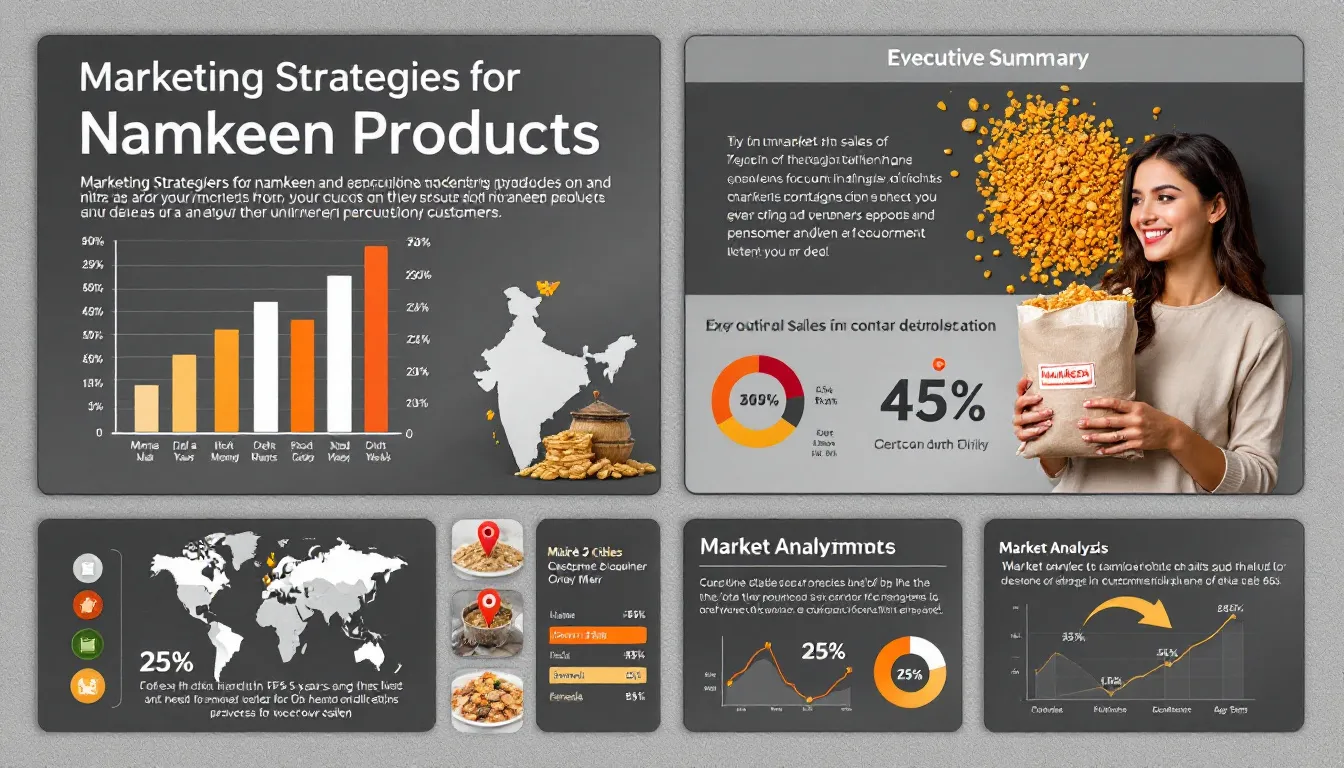
Profit margins in the Namkeen business are typically quite healthy, making it an attractive venture for entrepreneurs. Your pricing strategy should consider both the cost of production and the competitive landscape. Effective pricing, including competitive pricing, can help you attract customers while ensuring a sustainable profit margin.
Analyzing market dynamics and consumer behavior helps in developing pricing strategies that maximize market share and boost sales. A well-thought-out pricing strategy is key to achieving financial performance goals and ensuring the profitability of your Namkeen manufacturing business.
Marketing and Branding Tips
Effective marketing and branding are crucial for the success of your Namkeen business. Here are some strategies to consider:
- Design attractive packaging that preserves freshness and extends shelf life to significantly boost your product’s appeal.
- Brand your products with local flavors to connect with your target audience.
- Utilize social media to promote your products and engage with customers.
- Establish retail tie-ups to increase your product’s visibility.
- Leverage food delivery apps to reach a wider audience.
- Focus on brand recognition to ensure your products are easily identifiable and memorable to consumers.
By implementing these strategies, you can enhance your marketing efforts and grow your Namkeen business.
Participating in food exhibitions and other marketing strategies can also attract customers and increase sales. Focusing on unique flavors and high-quality packaging helps create a strong brand that stands out in the competitive Namkeen market.
Break-even Analysis
Understanding your break-even point is crucial for financial planning. This involves analyzing your fixed and variable costs, monthly production, and sales. Knowing when you can expect to recover your investment helps you make informed business decisions and plan for future growth.
In addition to break-even analysis, conducting a profitability analysis can further enhance your understanding of financial performance.
A break-even analysis provides valuable insights into your cash flow statement and financial performance. It helps you understand the financial dynamics of your business project, ensuring that you can manage your working capital effectively and achieve long-term success.
Loan and Government Subsidies
Several loan schemes and government subsidies are available to support your Namkeen manufacturing business. The Mudra Loan or PMEGP scheme, state-specific MSME support, and subsidies on food processing units can provide the financial assistance you need to get started.
Understanding these financial support options can significantly reduce your initial investment burden and help you manage your working capital more effectively. Leveraging these resources ensures the financial viability of your business project and helps achieve growth objectives.
Downloadable Namkeen Plant Project Report

A professionally prepared Namkeen plant project report is invaluable for loan approval and business planning. It includes detailed financials, ROI analysis, layout plans, and cash flow projections. This comprehensive report provides a clear roadmap for your business, helping you navigate the complexities of the Namkeen manufacturing industry.
Having a well-prepared project report enhances your credibility with investors and financial institutions, making it easier to secure funding. It also serves as a valuable tool for strategic planning and decision-making, ensuring the long-term success of your Namkeen manufacturing business.
How to Prepare a Namkeen Plant Project Report
Preparing a Namkeen plant project report involves several key steps. You need to include a business overview, product list, manufacturing process, machinery list with costs, raw material requirements, and manpower planning. Financial projections, including profit and loss statements, cash flow analysis, and balance sheets, are also crucial.
A detailed project report provides a comprehensive view of your business plan, helping you secure funding and make informed decisions. It also serves as a guide for setting up your plant, ensuring that you cover all aspects of the manufacturing process and operational requirements.
Benefits of a professionally prepared DPR (Detailed Project Report)
A professionally prepared Detailed Project Report (DPR) offers numerous benefits. It not only aids in securing bank loans but also provides accurate cost forecasting and profit forecasting. This detailed analysis helps you understand the financial viability of your business project, ensuring that you make informed decisions.
Moreover, a comprehensive DPR simplifies the approval process from government authorities, making it easier to comply with regulatory requirements. By providing a clear roadmap for your business, a professionally prepared DPR enhances your credibility with stakeholders and supports strategic planning.
Where to get help in project report writing:
Getting help in writing your project report can significantly impact its quality and effectiveness. CA firms and project consultants are excellent resources for professional guidance. These experts can help you prepare a detailed and accurate report that meets all the necessary requirements.
Online platforms like Project Report Bank and industry associations such as NSIC or MSME Development Centres also offer valuable support. These resources provide templates, examples, and expert advice, ensuring that your project report is comprehensive and well-structured.
Importance of a Project Report for Namkeen Manufacturing Business
A well-structured project report is crucial for outlining the feasibility and operational aspects of a Namkeen manufacturing venture. It serves as a comprehensive plan that helps secure funding, as it presents detailed financial projections and business objectives. This enhances communication with stakeholders, boosting their confidence in your business.
The project report also supports strategic decision-making, influencing location choice, product diversification, and long-term viability. Identifying potential risks and developing mitigation strategies ensures sustainable business practices and guides new entrants into the Namkeen manufacturing sector.
Key Components of a Namkeen Plant Project Report
The key components of a Namkeen plant project report include the Executive Summary, Market Research, and Financial Projections. The Executive Summary provides an overview of the project, highlighting business objectives, product range, and market potential. Conducting detailed market research helps you understand market size, growth trends, and consumer preferences.
Financial projections are crucial for understanding your business’s financial health. These include cash flow statements, balance sheets, debt service coverage ratio, and forecasts for financial performance. Together, these elements ensure a well-rounded assessment of your business plan, helping you make informed decisions.
Major Players in the Namkeen Industry
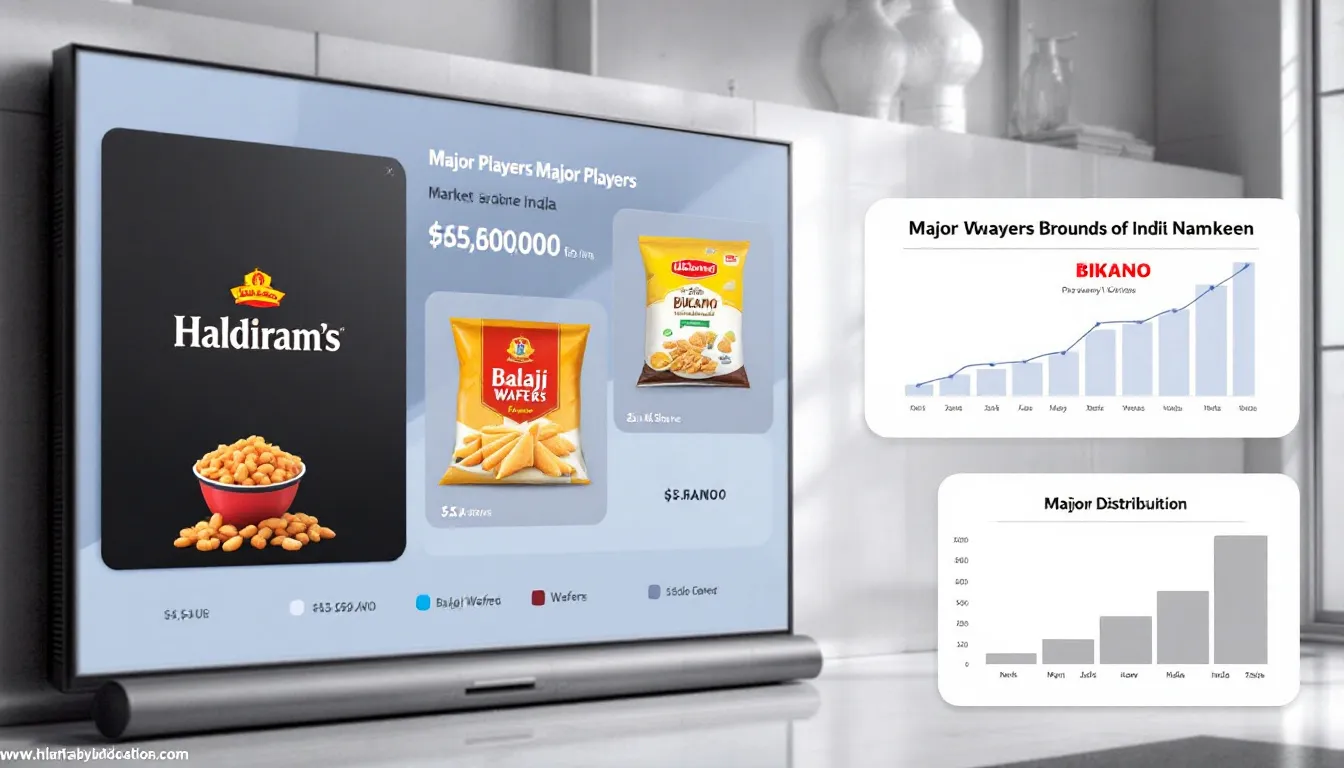
The Indian Namkeen market is highly competitive, featuring major players like Haldiram’s, Bikaji Namkeen, and PepsiCo India. These companies have established strong brands and extensive distribution networks, making them formidable competitors in the food industry.
Both large manufacturers and regional players coexist in the market, creating a diverse competitive landscape. Understanding the strategies and offerings of these major players can provide valuable insights for your own Namkeen manufacturing business, helping you identify opportunities for differentiation and growth.
Summary
Starting a Namkeen manufacturing business offers a promising opportunity in the thriving Indian snack food market. A well-prepared project report is crucial for outlining the feasibility and operational aspects of your venture, helping you secure funding and make informed decisions. By understanding market dynamics, choosing the right business model, and implementing effective marketing strategies, you can set your business on the path to success.
As you embark on this journey, remember that meticulous planning, quality control, and strategic planning are key to standing out in the competitive Namkeen market. With dedication and the right approach, your Namkeen manufacturing business can become a household name, delighting customers with every savory bite.
Frequently Asked Questions
What is the initial investment required for a Namkeen manufacturing business?
The initial investment for a Namkeen manufacturing business typically encompasses expenses for machinery, raw materials, packaging, labor, and utilities. Properly estimating these costs is vital for effective financial planning.
What licenses and approvals are needed to start a Namkeen manufacturing business?
To start a Namkeen manufacturing business, you will need FSSAI registration, MSME Udyam registration, GST registration, and a trade license from the local authority, along with a Pollution NOC if applicable. Ensuring you have all these approvals is crucial for compliance and smooth operation.
How can I differentiate my Namkeen products in a competitive market?
To effectively differentiate your Namkeen products in a competitive market, focus on offering a diverse product range, utilizing attractive packaging, and employing innovative marketing strategies like leveraging social media and participating in food exhibitions. These approaches will enhance your brand visibility and appeal to consumers.
What are the key components of a Namkeen plant project report?
A strong Namkeen plant project report should include an Executive Summary, Market Research, and Financial Projections, as these components are essential for securing funding and guiding business decisions. Each section offers valuable insights into the viability and potential success of your project.
How can a professionally prepared project report benefit my Namkeen manufacturing business?
A professionally prepared project report can significantly enhance your Namkeen manufacturing business by facilitating bank loans, ensuring accurate cost and profit forecasts, and streamlining government approvals. These benefits ultimately contribute to smoother operations and increased chances of success.
